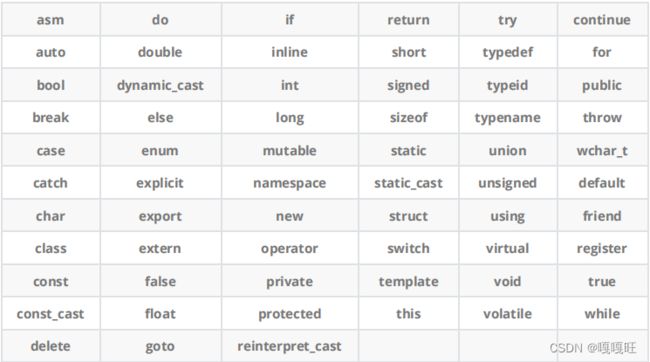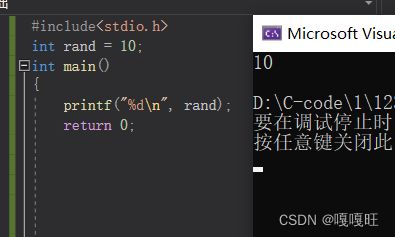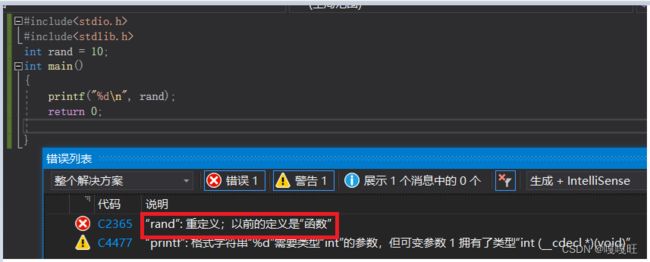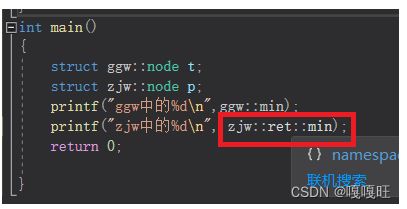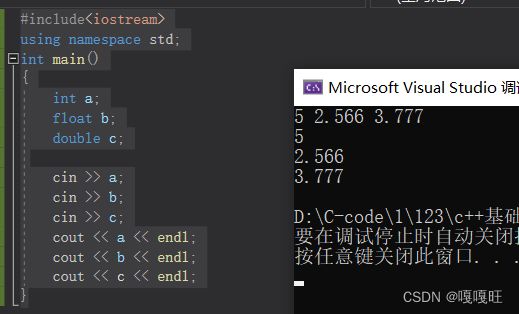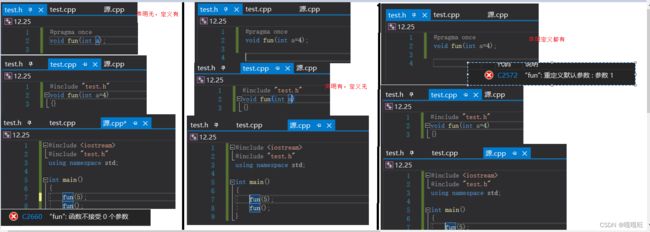【c++】入门1
c++关键字
命名空间
在C/C++中,变量、函数和后面要学到的类都是大量存在的,这些变量、函数和类的名称将都存在于全局作用域中,可能会导致很多冲突。使用命名空间的目的是对标识符的名称进行本地化,以避免命名冲突或名字污染,namespace关键字的出现就是针对这种问题的.
#include#includec语言没法解决这样的命名冲突问题,所以c++提出了namespace来解决。
命名空间定义
定义命名空间,需要使用到namespace关键字,后面跟命名空间的名字,然后接一对{}即可,{}中即为命名空间的成员。
#include解决了命名冲突问题;
#include使用不同的命名空间可以将同一个变量区分开,比如说ggw中的min和zjw中的min

命名空间可以嵌套
namespace zjw
{
struct node
{
int p1;
struct node* next;
};
namespace ret
{
int min = 10;
}
}
int main()
{
struct ggw::node t;
struct zjw::node p;
printf("ggw中的%d\n",ggw::min);
printf("zjw中的%d\n", zjw::ret::min);
return 0;
}
1.当定义两个头文件里的变量包含在一起时,也会出现变量重复定义,相当于一个工程里面,有两个组分别进行工程的不同部分,当两个组用同一命名时候,就可以用到命名空间了。
2.当两个命名空间同名时,编译器会将两个合并成一个命名空间。
命名空间的使用
namespace ggw
{
struct node
{
int p1;
struct node* next;
};
int a = 3;
int b = 4;
int c = 5;
}
1.加命名空间名称及作用域限定符
int main()
{
printf("%d\n",ggw::a);
return 0;
}
2.使用using将命名空间某个成员引入
using ggw::b;
int main()
{
printf("%d\n", b);
return 0;
}
相当于将ggw命名空间中的b变量展成全局的(虽然理解不太对,以后再修改)
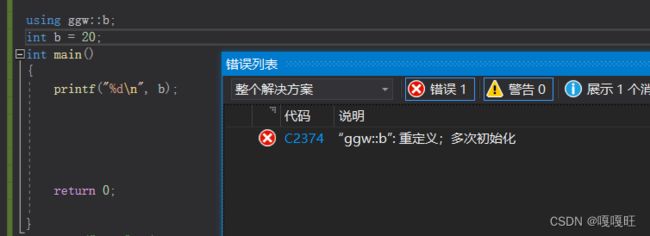
展开的话,再定义一个全局变量会出现重定义。
3.使用using namespace 命名空间名称引入。
using namespace ggw;
int main()
{
printf("%d\n", a);
printf("%d\n", b);
printf("%d\n", c);
return 0;
}
相当于将ggw命名空间中的所有变量展成全局的(虽然理解不太对,以后再修改),不建议全部展开
c++输入和输出
#includestd是C++标准库的命名空间名,C++将标准库的定义实现都放到这个命名空间中
如果不使用using namespace std的话,那就要加上该函数所在的命名空间(作用域)
#include说明:
- 使用cout标准输出对象(控制台)和cin标准输入对象(键盘)时,必须包含< iostream >头文件以及按命名空间使用方法使用std。
- cout和cin是全局的流对象,endl是特殊的C++符号,表示换行输出,他们都包含在包含< iostream >头文件中。
- <<是流插入运算符,>>是流提取运算符。
- 使用C++输入输出更方便,不需要像printf/scanf输入输出时那样,需要手动控制格式。C++的输入输出可以自动识别变量类型
自动识别变量类型
#includestd命名空间的使用惯例:
std是C++标准库的命名空间,如何展开std使用更合理呢?
- 在日常练习中,建议直接using namespace std即可,这样就很方便。
- using namespace std展开,标准库就全部暴露出来了,如果我们定义跟库重名的类型/对
象/函数,就存在冲突问题。该问题在日常练习中很少出现,但是项目开发中代码较多、规模
大,就很容易出现。所以建议在项目开发中使用,像std::cout这样使用时指定命名空间 +
using std::cout展开常用的库对象/类型等方式。
缺省参数
缺省参数概念
缺省参数是声明或定义函数时为函数的参数指定一个缺省值。在调用该函数时,如果没有指定实
参则采用该形参的缺省值,否则使用指定的实参。
#include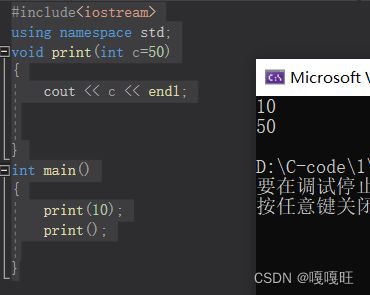
当函数有传参数过去时,就用传过去的形参,如果没有传过去的形参,采用该形参的缺省值。
缺省参数分类
全缺省参数
void print(int c=50,int b=20,int a=65)
{
cout << c << endl;
cout << b<< endl;
cout << a << endl;
}
半缺省参数
void print(int c,int b=20,int a=65)
{
cout << c << endl;
cout << b<< endl;
cout << a << endl;
}
缺省参数可用来初始化,比如栈的初始化。
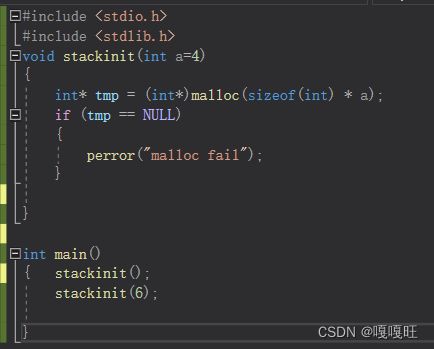
当初始化栈没有参数时,使用缺省参数。
- 半缺省参数必须从右往左依次来给出,不能间隔着给
- 缺省参数不能在函数声明和定义中同时出现
- 缺省值必须是常量或者全局变量
- C语言不支持(编译器不支持)
